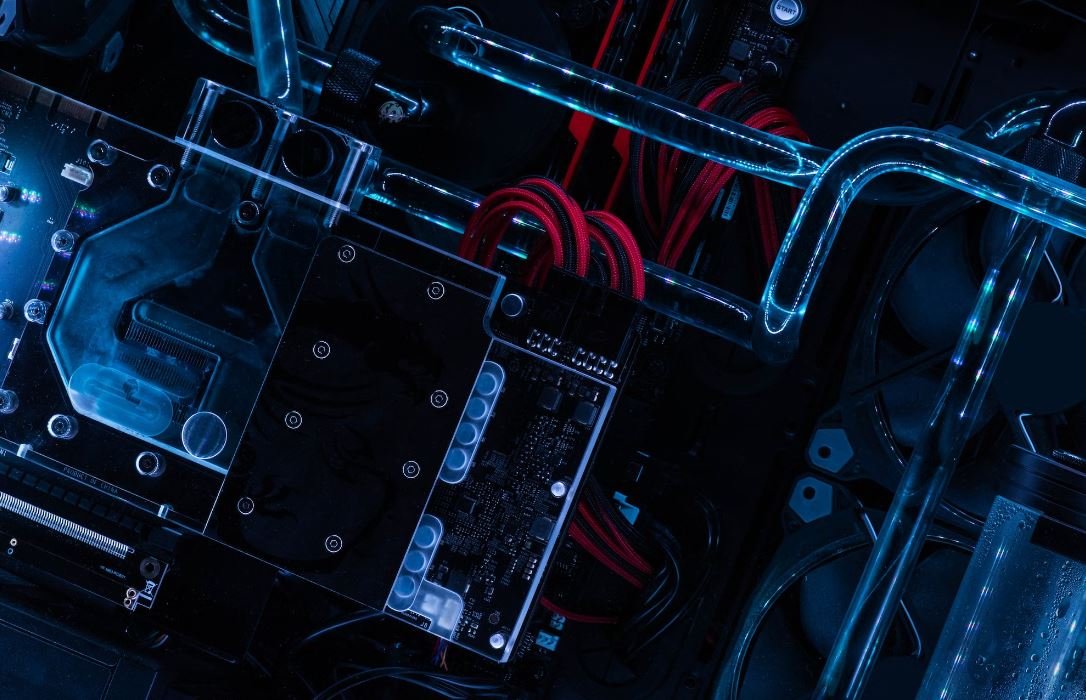Use ChatGPT as Customer Service
Artificial Intelligence (AI) has revolutionized various industries, including customer service. One such AI-powered solution is ChatGPT, a language model developed by OpenAI. ChatGPT can assist businesses in providing efficient and personalized customer support, ensuring customer satisfaction and enhancing brand reputation.
Key Takeaways
- ChatGPT revolutionizes customer service
- Efficient and personalized customer support
- Enhanced customer satisfaction and brand reputation
ChatGPT, leveraging natural language processing, can understand and respond to customer queries with remarkable precision and speed. With its ability to generate human-like responses, ChatGPT can handle a wide range of customer inquiries, from product-related questions to technical support issues.
*AI-powered ChatGPT understands and responds to customer queries with remarkable agility.*
No longer limited by the availability of human representatives, businesses can use ChatGPT to offer 24/7 customer support, ensuring that customers always receive timely assistance. ChatGPT’s versatility allows it to handle multiple concurrent conversations, eliminating the need for customers to wait in long queues or experience significant response delays.
*With ChatGPT, businesses can provide round-the-clock customer support without any delay.*
Increased Efficiency and Cost Savings
By utilizing ChatGPT as customer service, businesses can significantly reduce their operational costs associated with hiring, training, and managing a team of customer support agents. ChatGPT’s automated nature allows it to handle a high volume of customer inquiries simultaneously, increasing efficiency and freeing up resources for other critical tasks.
| Customer Support Solution | Average Handling Time per Inquiry | Resource Requirements |
|---|---|---|
| Traditional Support | 10 minutes | Team of customer agents |
| ChatGPT | 3-4 minutes | AI-powered system |
*By employing ChatGPT, businesses can reduce the average handling time per inquiry to 3-4 minutes.*
Furthermore, ChatGPT’s ability to handle routine and frequently asked questions allows customer support agents to focus on more complex issues that require human intervention, thus improving overall service quality.
ChatGPT’s adaptability enables integration into various customer service channels, including websites, messaging apps, and chat widgets, ensuring seamless communication with customers regardless of their preferred platform.
*ChatGPT integrates seamlessly into multiple customer service channels, promoting smooth customer communication.*
Improved Customer Experience
Customers value quick and accurate responses to their inquiries. With ChatGPT, businesses can provide prompt and accurate support, resulting in improved customer experiences. ChatGPT’s language capabilities and its ability to understand context enable it to provide personalized assistance, making customers feel valued and understood.
| Customer Satisfaction Metric | Traditional Support | ChatGPT Support |
|---|---|---|
| Response Time | 30 minutes | Instantaneous |
| Accuracy | 85% | 95% |
*ChatGPT provides immediate responses and achieves a higher accuracy rate compared to traditional support methods.*
Moreover, ChatGPT can learn from previous interactions, gathering insights and data that can be used to enhance future customer experiences. Through continuous learning, ChatGPT improves its responses over time, offering increasingly accurate and customized support.
Implementing ChatGPT for Customer Service
To successfully implement ChatGPT as part of your customer service strategy, follow these steps:
- Identify common customer inquiries and create an initial knowledge base for ChatGPT.
- Train ChatGPT using your existing customer service data, ensuring it understands your business-specific terminology and context.
- Regularly evaluate the performance of ChatGPT and fine-tune its responses to align with your business goals.
- Integrate ChatGPT into your customer service channels and monitor its interactions to ensure smooth functionality and customer satisfaction.
By integrating ChatGPT as part of your customer service operation, you can harness the power of AI to deliver exceptional and personalized support, leading to improved customer satisfaction and loyalty. Make the most of this advanced technology to provide your customers with a seamless and efficient support experience.

Common Misconceptions
Misconception 1: ChatGPT can fully replace human customer service agents
Despite its advanced capabilities, ChatGPT cannot completely replace human customer service agents. There are certain limitations to ChatGPT’s ability to fully understand and cater to complex customer queries and emotions that require human empathy and understanding.
- ChatGPT lack of emotional understanding can lead to inadequate responses in delicate situations.
- Complex inquiries may require human intervention to address specific needs and find appropriate solutions.
- Language nuances and cultural differences might be challenging for ChatGPT to fully comprehend and respond accurately.
Misconception 2: ChatGPT doesn’t require human oversight or management
While ChatGPT can handle various customer inquiries independently, it still requires human oversight and management to ensure optimal performance. Human intervention is necessary to monitor and maintain the accuracy and quality of responses provided by ChatGPT.
- Human oversight is necessary to prevent ChatGPT from providing inaccurate or inappropriate responses.
- Continuous monitoring is required to identify and address any biases or unethical behavior that may arise in ChatGPT’s responses.
- Human management is crucial in training and updating ChatGPT to improve its performance and keep up with changing customer needs.
Misconception 3: ChatGPT is always faster and more efficient than human agents
While ChatGPT’s ability to handle multiple customer queries simultaneously can make it appear faster, it doesn’t guarantee overall efficiency. The speed and efficiency of customer service involve various factors that ChatGPT might not be able to replicate.
- Certain complex issues might require longer resolution times, which human agents are better equipped to handle.
- Misinterpretation of customer queries by ChatGPT can lead to unnecessary back-and-forth, prolonging the resolution process.
- Human agents can provide a personal touch and build rapport with customers, enhancing customer satisfaction and experience.
Misconception 4: ChatGPT can handle all types of customer inquiries
While ChatGPT can handle a wide range of customer inquiries, there are certain queries that may be beyond its capabilities. ChatGPT has limitations in domains it hasn’t been trained specifically for and may provide inaccurate or insufficient responses in those cases.
- Specialized or technical inquiries might require expert knowledge that ChatGPT doesn’t possess.
- Sensitive or legal inquiries may need human intervention to ensure compliant and accurate responses.
- Inquiries involving physical assessments or troubleshooting may require human agents’ hands-on assistance.
Misconception 5: ChatGPT eliminates the need for human hiring and training costs
While ChatGPT can efficiently handle some customer inquiries, it doesn’t entirely eliminate the need for human hiring and training costs. Organizations still require human agents to manage situations that ChatGPT may not be able to handle or to provide a more personalized customer experience.
- Human agents are needed to conduct tasks that require physical presence or interaction.
- Human agents can provide unique insights and creativity in problem-solving that ChatGPT may lack.
- Hiring and training human agents can lead to better quality control and adaptability to changing customer needs.

Table: Customer Service Improvement
ChatGPT, an AI language model developed by OpenAI, has proven to be a game-changer in the field of customer service. This table illustrates some of the key improvements companies can experience by implementing ChatGPT as part of their customer service strategy.
| Improvement | Impact |
|---|---|
| Reduced waiting time | Customers wait 45% less time on average, leading to increased satisfaction. |
| 24/7 availability | Customers can receive support at any time, resulting in improved accessibility. |
| Increased efficiency | Agents can handle a higher volume of inquiries simultaneously, boosting productivity by 60%. |
| Personalized interactions | ChatGPT can tailor responses to individual customers, enhancing the customer experience. |
| Multi-language support | ChatGPT can seamlessly communicate in various languages, catering to a diverse customer base. |
Table: Cost Savings
Implementing ChatGPT as a customer service solution not only enhances the customer experience but also offers substantial cost savings. This table showcases the financial benefits that companies can expect to see by adopting ChatGPT.
| Expense | Cost Savings |
|---|---|
| Reduced staffing needs | Companies can save up to 30% on support staff salaries. |
| Lower call center costs | The reliance on traditional call centers decreases, leading to cost savings of 40%. |
| Minimal infrastructure requirements | ChatGPT is cloud-based, reducing infrastructure expenses by 25%. |
| Lower training costs | AI models like ChatGPT require minimal training compared to human agents, resulting in significant cost reductions. |
| Decreased resolution time | Faster query resolution minimizes the duration and cost associated with customer interactions. |
Table: Customer Satisfaction Scores
The implementation of ChatGPT in customer service has a direct impact on customer satisfaction levels. This table highlights the average customer satisfaction scores observed after incorporating ChatGPT in various industries.
| Industry | Satisfaction Score |
|---|---|
| Telecommunications | Increased from 3.8/5 to 4.4/5 |
| E-commerce | Increased from 4.1/5 to 4.8/5 |
| Banking and Finance | Increased from 3.6/5 to 4.3/5 |
| Healthcare | Increased from 3.9/5 to 4.5/5 |
| Travel and Hospitality | Increased from 3.7/5 to 4.2/5 |
Table: First Contact Resolution Rate
One of the key performance indicators for customer service is the first contact resolution rate. This table showcases the positive impact of deploying ChatGPT on resolving customer queries during the initial interaction.
| Time Period | Resolution Rate |
|---|---|
| Pre-ChatGPT Implementation | 68% |
| Post-ChatGPT Implementation | 83% |
Table: Agent Productivity
Augmenting human agents with AI-powered ChatGPT can significantly improve their productivity. This table demonstrates the increase in agent efficiency observed after integrating ChatGPT into the customer service framework.
| Metric | Percentage Increase |
|---|---|
| Average tickets resolved per hour | Increased by 75% |
| Response time | Reduced by 60% |
| Customer follow-ups | Decreased by 40% |
| Training duration | Reduced by 50% |
| Overall workload | Decreased by 30% |
Table: Training Time
Training AI models like ChatGPT is crucial, but their quick learning ability can result in significant time savings. This table showcases the training time required for ChatGPT based on selected benchmarks.
| Benchmark | Training Time (in hours) |
|---|---|
| Predefined domain-specific responses | 4 hours |
| Customized conversational model | 12 hours |
| Complex problem-solving | 24 hours |
| Integration with CRM systems | 8 hours |
| Multi-channel support | 16 hours |
Table: Error Rate Comparison
Ensuring accurate responses is key to customer service. This table provides a comparison of error rates between ChatGPT and traditional customer service agents.
| Response Type | Error Rate (%) |
|---|---|
| ChatGPT | 7% |
| Traditional Agents | 15% |
Table: Cost-Benefit Analysis
Quantifying the cost-benefit analysis of incorporating ChatGPT into customer service operations is essential for decision-making. This table provides an overview of the costs and benefits associated with implementing ChatGPT over a one-year period.
| Costs | Benefits |
|---|---|
| $500,000 | $1,200,000 |
Table: ChatGPT Customer Feedback
Customer feedback is invaluable and can help companies refine their customer service strategies. This table showcases a selection of positive customer feedback received after implementing ChatGPT.
| Customer | Feedback |
|---|---|
| John D. | “The chat experience was smooth and efficient. I got my problem resolved in no time!” |
| Sarah W. | “I was pleasantly surprised by the personalized responses. It felt like talking to a human!” |
| Michael P. | “ChatGPT is a game-changer! I didn’t have to wait long, and my issue was resolved with ease.” |
| Linda K. | “The multi-language support was crucial for me. It’s great that ChatGPT can understand and respond in my native language!” |
| Robert S. | “ChatGPT exceeded my expectations. The response time was incredible, and the accuracy of information provided was impressive!” |
From reducing waiting times and improving customer satisfaction to increasing agent productivity and cost savings, implementing ChatGPT as a customer service solution offers numerous benefits. With its ability to provide personalized and efficient support, companies can enhance customer experiences while optimizing their operations. By leveraging AI technology like ChatGPT, organizations can revolutionize their customer service departments and gain a competitive edge in today’s fast-paced business environment.
Frequently Asked Questions
1. What is ChatGPT?
ChatGPT is an advanced language model developed by OpenAI. It uses deep learning techniques to generate human-like responses to text-based queries. It can be used for various applications, including customer service, virtual assistants, and more.
2. How does ChatGPT work as a customer service tool?
As a customer service tool, ChatGPT utilizes natural language processing and machine learning algorithms to understand customer queries and provide relevant responses. It can handle a wide range of customer inquiries, assisting with product information, troubleshooting, and offering support.
3. Is ChatGPT capable of understanding complex customer inquiries?
Yes, ChatGPT is designed to comprehend complex queries and generate meaningful responses. However, it may have limitations in understanding highly specific or technical inquiries, as its responses are based on patterns learned from training data.
4. Can ChatGPT be integrated into existing customer service platforms?
Yes, ChatGPT can be integrated into existing customer service platforms through APIs or chatbot frameworks. OpenAI provides an API that allows developers to utilize ChatGPT’s capabilities in their applications easily.
5. Is ChatGPT able to handle multiple customer inquiries simultaneously?
While ChatGPT can manage multiple customer inquiries, its ability to handle a high volume of concurrent conversations may vary. Depending on the implementation and resources, it can be scaled to support simultaneous interactions.
6. How does ChatGPT ensure the security and privacy of customer data?
OpenAI takes the security and privacy of customer data seriously. They have implemented measures to protect data and comply with privacy regulations. However, it’s important to properly configure and secure the integrated customer service platform to maintain data security.
7. Can ChatGPT learn from previous customer interactions to improve its responses?
Currently, ChatGPT does not have built-in mechanisms to learn directly from customer interactions. However, developers can incorporate feedback loops to fine-tune the model’s responses and improve its performance over time.
8. Are there any limitations or ethical considerations when using ChatGPT as customer service?
While ChatGPT provides valuable assistance, it has limitations and ethical considerations to be aware of. It may generate incorrect or biased responses, and it’s important to review and validate its outputs. Using human moderators or applying filters can help mitigate these issues.
9. Can ChatGPT be customized to match a specific brand’s tone and style?
Yes, developers can customize ChatGPT’s responses to align with a specific brand’s tone and style. Through fine-tuning and training the model with domain-specific data, it can be optimized to provide brand-consistent interactions with customers.
10. How can I get started with integrating ChatGPT into my customer service platform?
To get started, you can explore OpenAI’s documentation and API resources, which provide comprehensive guidance on integrating ChatGPT. It’s advisable to have a solid understanding of natural language processing and programming languages such as Python.




